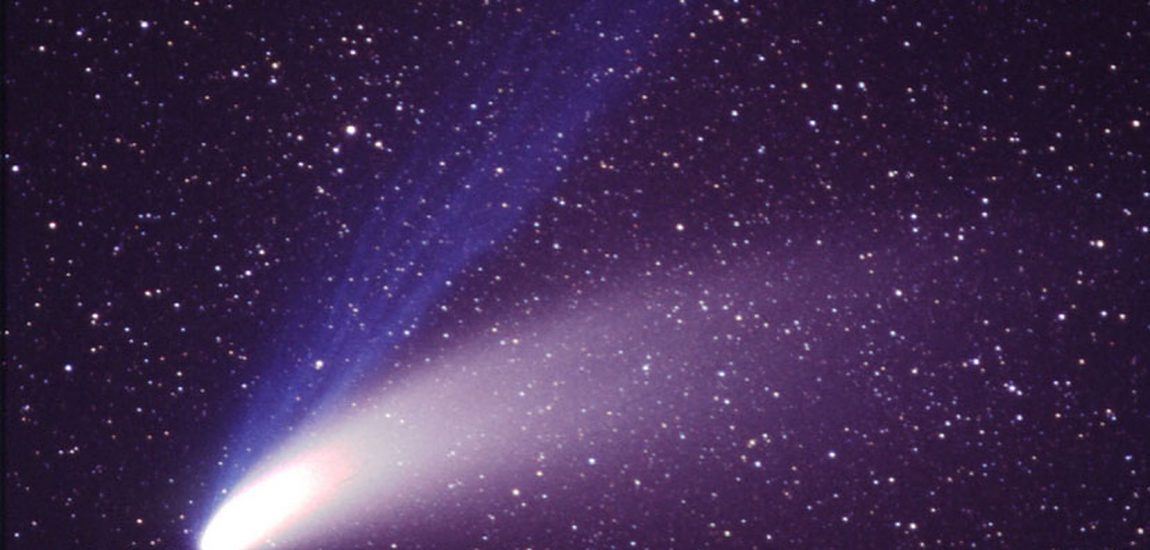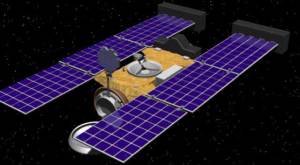
Dirty snowballs and our origins

Have you ever imagined how a person with long hair would look floating in the outer space? Ancient Greeks did. When they perceived comets in the sky they imagined them as a face with long hair floating in space. In fact, the word “comet” in Greek means “wearing long hair” or “long-haired star.” Today we know that comets are not stars and do not have hair, but they remain one of the most beautiful and mysterious objects we can admire in the sky.
Comets have always been fascinating to the human race. From Mesoamerican Indians to Middle age artists, comets have always had a special representation in art and beliefs. Mayan codices, for example, show representations of comets because Mayans interpreted celestial events as messages from the gods.
Similarly, middle-age European artists perceived comets as messengers related to a divinity or religious character. In those times, the only way to observe these enigmatic objects was with the naked eye or a small telescope.
Today, scientists use powerful telescopes. And to make the observations and analyses even more accurate, they also launch spacecraft to get closer views of a comet’s surface and analyze its chemical composition with more precision.
However, getting close to a comet is challenging. Typically, comets orbit around the Sun at speeds of 65,000 km/h. And because they are small objects –on average 4-8 km in width— they do not have a huge gravitational pull. Therefore, it is tricky for a spacecraft to fly by a comet and remain close enough to obtain high resolution images and high quality compositional data.


Today, scientists use powerful telescopes. And to make the observations and analyses even more accurate, they also launch spacecraft to get closer views of a comet’s surface and analyze its chemical composition with more precision.
However, getting close to a comet is challenging. Typically, comets orbit around the Sun at speeds of 65,000 km/h. And because they are small objects –on average 4-8 km in width— they do not have a huge gravitational pull. Therefore, it is tricky for a spacecraft to fly by a comet and remain close enough to obtain high resolution images and high quality compositional data.
Fortunately, as homo sapiens, we always find ways to overcome those challenges, especially when a beautiful object is involved. In 2004, the Stardust spacecraft, a NASA Space Mission, came within 237 km of comet Wild-2 for several hours1. This was the first time someone came this close to a comet.
During that encounter, the spacecraft took very high-resolution images of the comet’s surface1. Most importantly, the spacecraft deployed a collector and collected comet particles that detached from the comet, and the samples were brought back to Earth for analysis in 2006.
That is quite an impressive approach and an outstanding achievement!
It took more than 150 scientists from around the globe, more than a dozen analytical techniques, and several years to analyze those precious samples. But the time and effort were worth it, because the results were, literally, out of this world2,3,4. And I am very proud to have been part of the Stardust endeavor as an active scientist, performing many of those analyses and helping advance the knowledge we have about comets and their role in the origin of life on Earth.
In effect, the analyses of the comet samples that were brought back to Earth by Stardust showed that the formation of our solar system was a much more dynamic process than previously thought2. Indeed, comets are composed of ice and rock; they are dirty snowballs. They contain rocks that were formed in a very hot environment close to the Sun, along with ice that formed at the edges of the solar system3. The combination of these two types of materials within a single object implies that the hot rocks were transported across the entire solar system2, from the Sun all the way to the edge, beyond Neptune, to the comet-forming region called Kuiper belt. There, the hot rocks mixed with the ice and formed these magnificent objects called comets.
Within the rocks, scientists identified some of the ingredients to form life, called organic molecules. These are materials rich in carbon, oxygen, and nitrogen that also have shapes resembling biological structures, called globules2,4. These materials are similar to some of the molecules commonly found in living cells, which suggests that there is a link between comets and the origin of life on Earth.
Mayans and middle age artists were right; indeed, comets are messengers. They hold the clues of our origins and the truth of our existence. In fact, many scientists, including myself, believe that comets probably brought much of the water of the Earth’s oceans and might have seeded the Earth with some of the chemicals needed to spark life. The Stardust mission confirmed some of those beliefs, and now, a new space mission, Rosetta, is doing its share to reiterate them.
Indeed, in August of this year, the European Space Agency (ESA) approached another comet with a spacecraft named Rosetta5. The spacecraft came near comet 67P/Churyumov-Gerasimenko (67P) after ten years of journeying through space.
Rosetta has been orbiting comet 67P ever since and, on November 12th, dispatched a robot named Philae, which landed on the surface and drilled 25 cm into the comet material to analyze its composition. Philae landed on a shadow area of what appears to be a hill or a crater and its solar panels can’t receive enough light to charge the batteries. As a result, Philae entered into sleep mode. But before that, Philae sent back to Earth all the science data that its instruments were able to obtain, and scientists in charge of Ptolemy, one of the instruments on board of Philae, have already recognized the signal of organic molecules in the comet material, which was released during Philae’s landing and that Ptolemy analyzed.6
Mission controllers hope that, as the comet approaches the sun in the following weeks, Philae’s solar panels will become more exposed and the batteries will recharge again.5 Hopefully, there will be another chance for Philae to continue the exploration of comet 67P’s surface.
Getting so close to a fast moving comet that is only 4 km wide is already glorious. It was a small leap for the lander –which was released from Rosetta at a distance of around 20 km — but certainly an unprecedented leap for the history of space exploration.
The data will unravel new clues related to our origins and, of course, will leave many new, unanswered questions, just to keep our homo sapiens curiosity busy and challenged.
That is the true grandeur of comets!
References:
- Brownlee, Donald E., Horz, Friedrich, Newburn, Ray L., Zolensky, Michael, Duxbury, Thomas C., Sandford, Scott, Sekanina, Zdenek, Tsou, Peter; Hanner, Martha S., Clark, Benton C.; Green, Simon F., Kissel, Jochen. 2004. Surface of Young Jupiter Family Comet 81 P/Wild 2: View from the Stardust Spacecraft.Science 304:1764-1769
- Brownlee, D., Tsou, P., Aleon, J., Alexander, C. M. O., Araki, T., Bajt, S., Baratta, G. A., Bastien, R. and 175 coauthors. 2006. Comet 81P/Wild 2 Under a Microscope. Science314 :1711-1716
- Simon, S. B., Joswiak, D. J., Ishii, H. A., Bradley, J. P., Chi, M., Grossman, L., Aleon, J., Brownlee, D. E., Fallon, S., Hutcheon, I. D., Matrajt, G., McKeegan, K. D. 2008. A refractory inclusion returned by Stardust from comet 81P/Wild 2. Meteoritics & Planetary Sciences43:1861-1877
- Matrajt, G., Ito, M., Wirick, S., Messenger, S., Brownlee, D. E., Joswiak, D., Flynn, G., Sandford, S., Snead, C., Westphal, A. 2008. Carbon investigation of two Stardust particles: A TEM, NanoSIMS, and XANES study. M&PS43:315-334
- ESA website: http://www.esa.int/Our_Activities/Space_Science/Rosetta
- BBC news: http://www.bbc.com/news/science-environment-30209533
